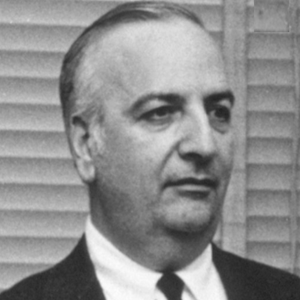Baruj Benacerraf

Baruj Benacerraf, October 29, 1920 – August 2, 2011, was a Venezuelan-American immunologist who won the 1980 Nobel Prize in Physiology or Medicine. He shared the prize for “discovery and synthesis of major histocompatibility complex gene genes that encode cell surface proteins molecules essential for the immune system’s differentiation between self- and non-self.”
After completing his military service in the United States Army (1945-48), he worked at the French military hospital of Nancy (1956-68). He then became a researcher at Columbia University College of Physicians and Surgeons (1948-50). He did research in Paris (1950-56), then moved to New York University (1956-68), then to the National Institutes of Health ( 1968-70), and finally to the Harvard University, where he was the Fabyan Professor of Comparative Pathology. In 1948, he began to study allergies and in 1960 he discovered the Ir (immune reaction) genes that govern transplant rejection. Benacerraf has published over 300 articles and books in a variety editions.
Columbia was where Benacerraf started in Immunology with Elvin A. Kabat. There he worked for two years on experimental hypersensitivity mechanisms. After family problems, he moved to Paris and accepted a job in the Bernard Halpern laboratory at the Hopital Bleussais. He also developed a close relationship with Guido Biozzi, an Italian scientist. He worked for six years on immunity and the reticuloendothelial functions. The function of white blood cells within a barrier tissue is called reticuloendothelial function. They discovered methods to examine the removal of particulate matter in blood using the RES (reticuloendothelial systems) and developed equations that regulate this process in mammals. Baruj left France after six years to establish his laboratory in the United States. He set up his own laboratory in New York City, and then returned to the United States to continue studying hypersensitivity. Baruj collaborated with many other immunologists in New York on various fields of hypersensitivity. Baruj began training new scientists after he left his New York laboratory. Baruj also made the decision to focus his efforts on his laboratory instead of the family business. Baruj’s discovery would eventually win him the Nobel Prize. He discovered that antigens, which are substances that cause a reaction in the immune system, could be injected into animals of similar genetic background to create two types of responders and nonresponders. Further research was conducted and he discovered that certain antigens were able to trigger a response from the dominant autosomal gene, called the immune response genes. This complicated process would eventually lead to an understanding of how these genes would influence immune responses.
He is still right about his discovery, and many more have been discovered in the past century. A gene complex known as the major histocompatibility complicated has been responsible for more than 30 genes. The histocompatibility complicated is a complex component of DNA that regulates the immune response. This research also clarified autoimmune diseases like multiple Sclerosis and Rheumatoid Arthritis.